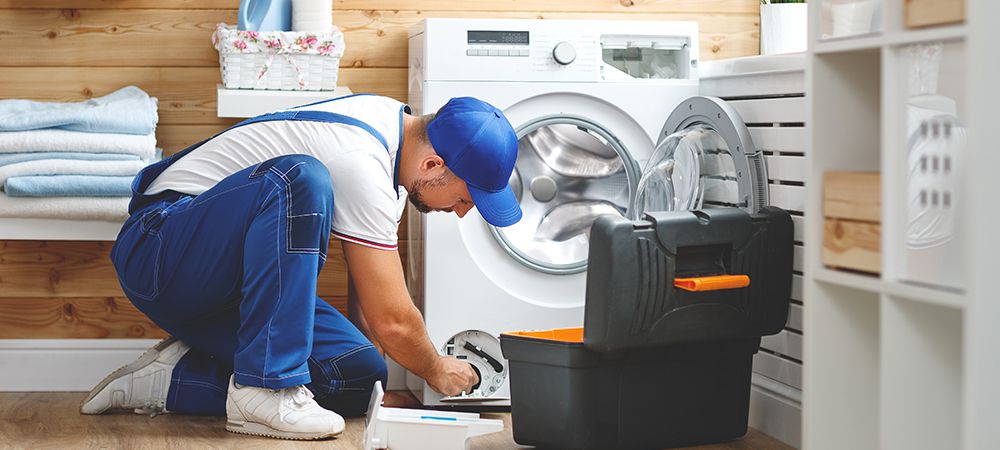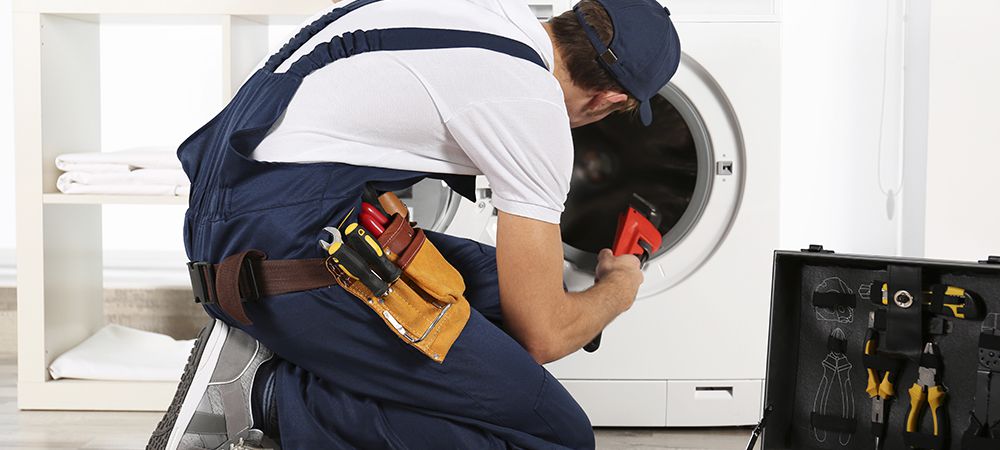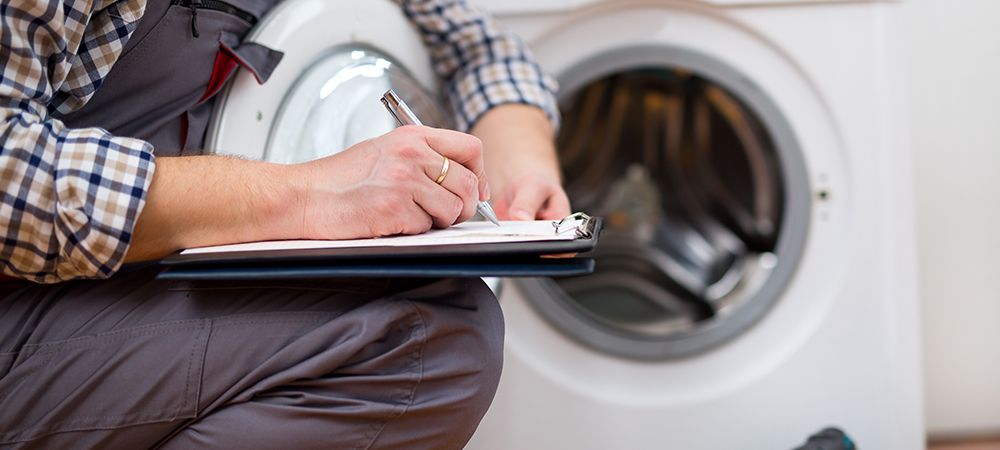Common dryer problems tend to be annoying because they happen at the wrongest time possible. And, you’re not the only one dealing with these pesky dryer issues. In 2017, the average Canadian spent nothing less than $92 on either their washers or dryers.
But it’s still important to fix a faulty dryer despite the cost of repair. The convenience a dryer offers is one of the main reasons it’s increasingly popular as a household appliance. It’s as simple as throwing in wet clothes and waiting a few minutes to get dry clothes. A dryer becomes even more instrumental during the cold winter months where air-drying is daunting.
Luckily, common dryer problems are easy to understand. And you can fix them yourself with minimal technical knowledge. Conversely, you may require expert dryer repair technicians to analyze and fix complex problems.
But before that, we’ll do our part to help you fix common dryer repair problems with this guide. Here, we’ll explore the probable causes and most likely solutions. Let’s get into it!
1. Dryer Not Coming On
The dryer not coming on happens to one out of every three dryer users. And as simple as a dryer may look, it’s a complex device with many parts that can develop faults. The good news is there are common culprits you can inspect when your dryer refuses to turn on.
Firstly, check your dryer settings to see if all is in order. You can also test the power source for electricity. If there’s a power supply, check if you have pressed or turned the power button appropriately.
It’s time to start checking other components if the dryer still isn’t coming on. Checking these components is a bit technical and requires certain tools. Also, ensure your dryer is totally off before getting your hands dirty. Some of the components to check include:
Power source
If you followed the process above, you must have done the quick power source check. But the next step is to go deeper to make sure there is a source of power. You need to confirm if there is voltage with a VOM. The VOM device will read if there is a power supply, and you can check other problems. Also, you can use a multimeter if you don’t have access to a VOM.
Another option is to inspect the breakers in your home’s electrical panel. If you’re not familiar with your home’s electrical panel, this may be the right time to contact dryer repair services. An expert can identify and fix circuit breaker issues quickly.
Terminal
Fixing a faulty terminal causing your dryer not to come on can be quite complicated. But, it’s doable. Firstly, you’ll need a multimeter and loads of caution.
It’s a bit dangerous because you can’t confirm if there is a power problem at your terminal block with the dryer off.
First, carefully remove the power chord to gain access to the panel. Then, use the multimeter to confirm the voltage (power supply must be on). A lack of readings means the terminal blocks require replacement. You can then turn off the power and use a screwdriver to remove and replace the terminal block.
Spoilt door switch
Every dryer owner knows the device doesn’t work with the door open. Lint deposits and other debris cling to your dryer’s door with every load you put in it. Over time, lint and debris may hinder your door from shutting correctly. In turn, that’ll prevent the dryer from coming on at all.
The fix for this common dryer repair problem is an easy one and it requires removing lint and debris hindering the dryer from starting. Plus, you can prevent future occurrences by cleaning the door area regularly.
Thermostat problems
A dryer works with heat, and like other devices reliant on heat energy, one or more thermostats are working within it. The primary use of the thermostat is to regulate the temperature inside the dryer. Plus, multiple thermostats within your dryer work with different drying cycles.
You’ll need to buy a replacement thermostat to fix this problem. We recommend entrusting this job to a professional technician. They know how to identify quality thermostats and will do the replacement seamlessly.
Related Article: Appliance Repair: 10 Tips to Save Money
2. Dryer Not Getting Hot
Heat issues are one of the common dryer problems that users hate. Can you imagine setting up your dryer, putting in wet clothes, only to get back and your clothes are still damp?
Four primary components may be responsible if your dryer is working but isn’t generating heat. But ensure your dryer is under the right settings before you start to troubleshoot these components. Sometimes, your dryer may not be getting hot because it’s set to the wrong dial.
Damaged thermal fuse
The thermal fuse in your dryer is the component responsible for safe heating. Usually, the thermal fuse is somewhere behind the dryer. A dryer with a faulty thermal fuse won’t get hot because there’s no safety net. Luckily, replacing a thermal fuse is easy.
First, switch off the dryer and make your way to the back panel. After that, remove all connections and take out the fuse. You’ll find different types of thermal fuses in stores near. Therefore, it’s better to take a picture to ensure you buy the right replacement model.
Coils
Also located at the back of the dryer, the coil or heating element, can cause your dryer to stop getting hot. With access to the back panel, you can check to see if the coils are burnt.
Use a multimeter to get a reading if you can’t see any burns. You’ll need to change dryer coils that aren’t giving any readings.
Thermostat
The thermostat may also be the component stopping your dryer from getting hot properly. Again, the thermostat is usually at the back of the dryer. You can test the thermostat with a multimeter, but this time, you have to set it to RX1.
Temperature switch
To test the temperature switch, the multimeter has to be set at RX1. You know where your temperature switch is, so if you’re suspecting it, you have to gain access to its element. You can unscrew the cover in front and at the back or through the nobs.
With the multimeter, test the temperature switch and watch for any readings. To test the temperature switch correctly, you may need to remove the leads and watch the reading.
3. Drum Not Spinning
The answer to how to repair a bad dryer is straightforward when the problem is a faulty drum. More often than not, the drum isn’t spinning due to a bad belt.
Belt
The belt can stop the drum from spinning in two ways. It’s either spoiled and can’t turn the drum again. Conversely, the belt can get dislodged from its natural position on the pulley.
When this happens, the bet will lose the ability to spin the drum. Changing the belt is a straightforward process. The only technical aspect is ensuring you’re buying the right replacement belt.
Rollers
A dryer’s drum sits on a component known as a roller. And while it spins, the roller continues to wear out and will at some point require a change. Changing the rollers is easy; all you need to do is get the drums out of the way carefully.
4. Extremely High Heat from Dryer
The first thing to think of when you notice extreme heat coming from your dryer is safety. It’s one of the common dryer problems, but ensure you switch off the dryer immediately to avoid a fire and allow it to cool before you inspect it. Here are some of the components to check;
Vents
As you dry your clothes, it’s important to clean lint in your vents as it can cause the device to overheat. Check the vents and remove every bit of lint and debris in it.
Thermostat and coils
The dryer won’t stop working due to a faulty thermostat and coils. Instead, it may start to overwork itself. This time around, your thermal fuse becomes almost useless, and your coils produce too much heat. You can follow the processes discussed above to replace and fix such challenges.
5. Dryer Making Noise while Working
A dryer has many components that ensure that the device works optimally. These components may start to move around due to friction, faults, wear and tear. Typically, these movements are an indication of a problem about to happen.
But before the damage occurs, your dryer will start making strange noises. One of the best dryer repair tips is listening and understanding the noises coming from your dryer. That way, you’ll know what to do.
Some of the common culprits include:
- Belts
- Plastic glides
- Rollers
- Blower wheels
If you notice any strange noises, you can check these components to confirm and replace them where and when necessary.
6. Drying Cycle Takes too Long
One significant advantage of using a dryer is that it saves time. Therefore, it can be pretty annoying when your dryer takes too long to dry your clothes. The faulty component here is usually the lint filter.
Your dryer has a lint filter that allows easy airflow to the clothes. A dryer with a full lint filter will have a longer drying cycle. That’s why you need to clean the lint frequently.
7. Clothes are Wrinkled After Drying
This is one of the common dryer problems that are easy to fix. Mainly, it happens due to the way you arranged your clothes in the dryer. Reading the recommendations in your user manual and adhering strictly to the instructions will fix this problem.
8. Dryer Works for Short Period
When your dryer starts and stops after a short while, the issue is usually with the temperature elements. You can check the thermal fuse, the thermostat, or the coils with a multimeter. Then, buy and install a replacement after discovering the culprit.
9. Lint Covering Clothes
Leaving lint in your dryer can cause a couple of common problems in your dryer. Lint can cover your clothes and sometimes stain them. Fixing this common dryer problem is achievable by giving your device a thorough clean.
10. Dryer Works and Vibrates Unusually
Sometimes, you may notice your dryer moves out of its position while it works. Mostly, the problem responsible for this occurrence is external. Therefore, you may want to check the base of the dryer to ensure it is standing well.
Related Article: How Much Does Electric Dryer Repair Cost In Toronto?
Final Thoughts
The common dryer problems, as discussed in this guide, usually have simple solutions. However, some of the solutions can be technical, and we won’t advise you to try to fix them yourself. It’s always better to call an expert.
If you have been having frequent issues with your dryer or hear strange noises you can’t understand, you may need an expert. Our team at Prime Appliance Repair has the best technicians who not only know the probable causes but can provide efficient solutions. Contact us for professional dryer repair services today!









